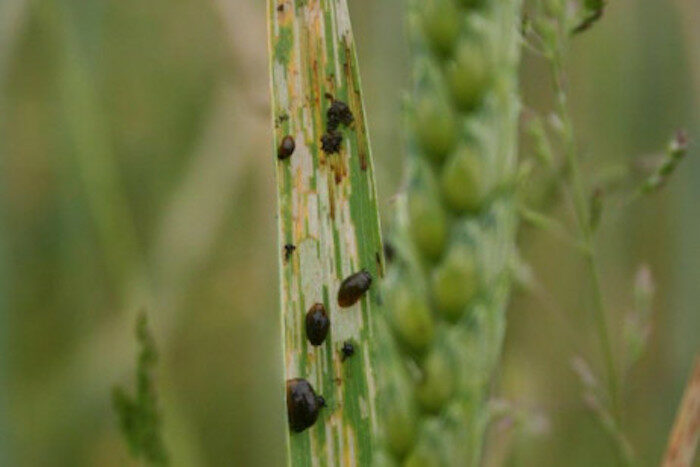By John Tooker, Professor of Entomology
We have heard reports of cereal leaf beetle larvae being active in wheat and oat fields (barley and rye can be infested occasionally), particularly in, and in the vicinity of, Berks County, Pa.. Infestations are difficult to predict and can be very patchy, so scouting is the key to identifying local populations and populations that are large enough to be managed.
Cereal leaf beetle eggs and young larvae are orange and relatively to see, but as they get older they can be mistaken for slugs because they can look dark and shiny because they cover themselves with their own frass, which is the word for insect feces. If you look closely at these shiny animals and see six small legs, you will know you are dealing with cereal leaf beetle larvae and not slugs (Figure 1). Moreover, slugs are nocturnal, so slimy creatures out during the day in small grains have a good chance of being cereal leaf beetle larvae.
If young larvae are detected at populations exceeding the economic threshold, cereal leaf beetle is easily controlled with insecticides, but larger larvae are more difficult to control and cause more damage, particularly if they are feeding on the flag leaf. Insecticide treatments are warranted if populations exceed the economic threshold of one larva over 0.13 inches long per stem over a field or a portion of a field.
A recently published fact sheet provides more details on their lifecycle and some images of adults, larvae, and their damage. For insecticide options, please consult Penn State’s Agronomy Guide.







Post a comment
Report Abusive Comment